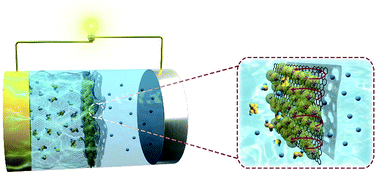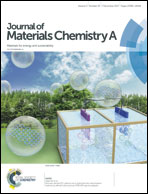In situ preparation of a macro-chamber for S conversion reactions in lithium–sulfur batteries†
Abstract
Lithium–sulfur (Li–S) batteries have been identified as the most promising options for energy storage because of their high theoretical capacity and environmental friendliness. However, low utilization of sulfur in the cathode and the shuttle effect, which leads to a poor cycle life, hinder the realization of Li–S batteries. Herein, we have designed a new type of rGO-supported TiN-nanoparticle (TiN/rGO) multifunction cover layer via an in situ synthesis method. The excellent blocking effect of lithium polysulfides and outstanding catalytic ability and superior electron conductivity of the TiN/rGO cover layer favor the development of a macro-chamber for S conversion reactions (MCSR) at a macroscopic scale. This macro-chamber, in which either pure sulfur powders or sulfur-based composites can be directly adopted as active materials, can significantly reduce the shuttle effect and increase sulfur utilization for lithium–sulfur batteries. When the S powder loading is as high as 8 mg cm−2, the battery continues to deliver outstanding electrochemical performance and cycling stability. Via this MCSR design, indispensable support materials for S and additives for electrolyte will no longer be needed in the current Li–S cells.

- This article is part of the themed collection: 2017 Journal of Materials Chemistry A HOT Papers


 Please wait while we load your content...
Please wait while we load your content...